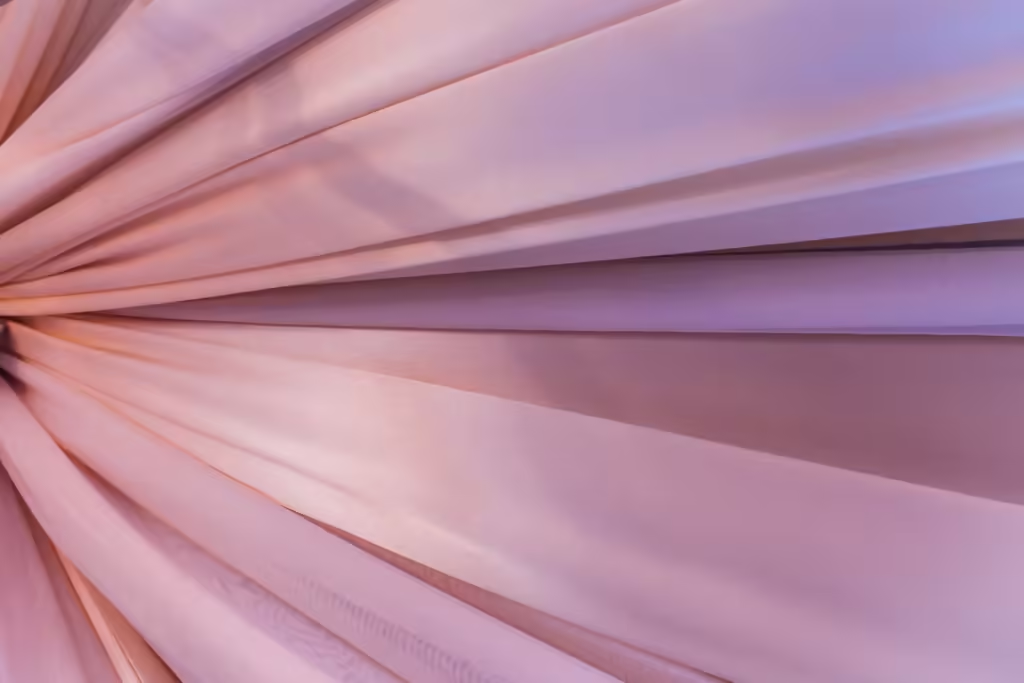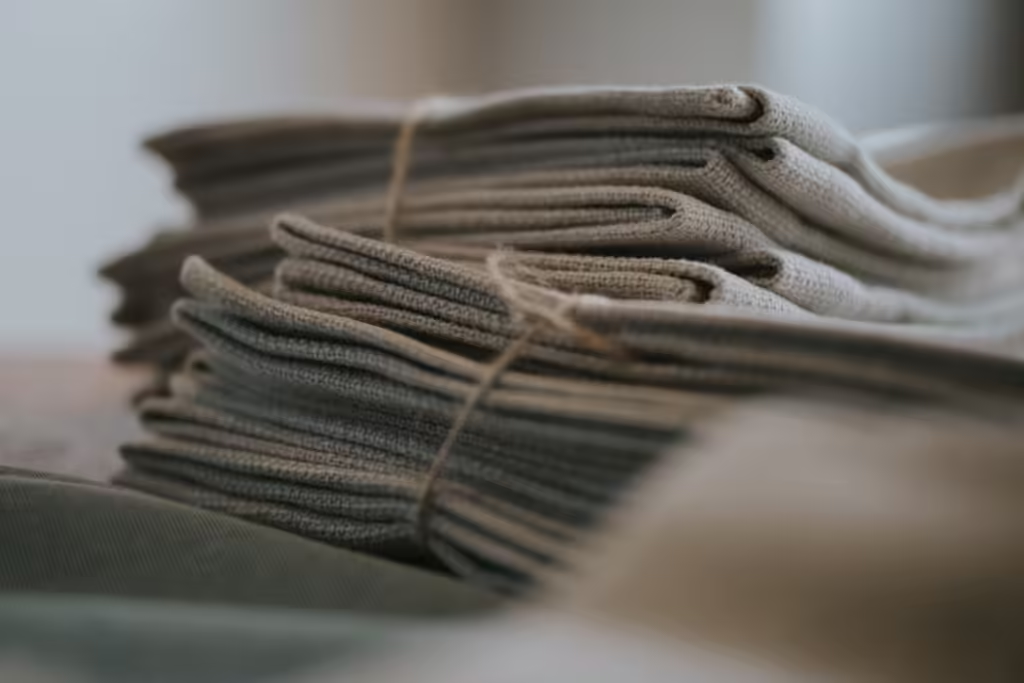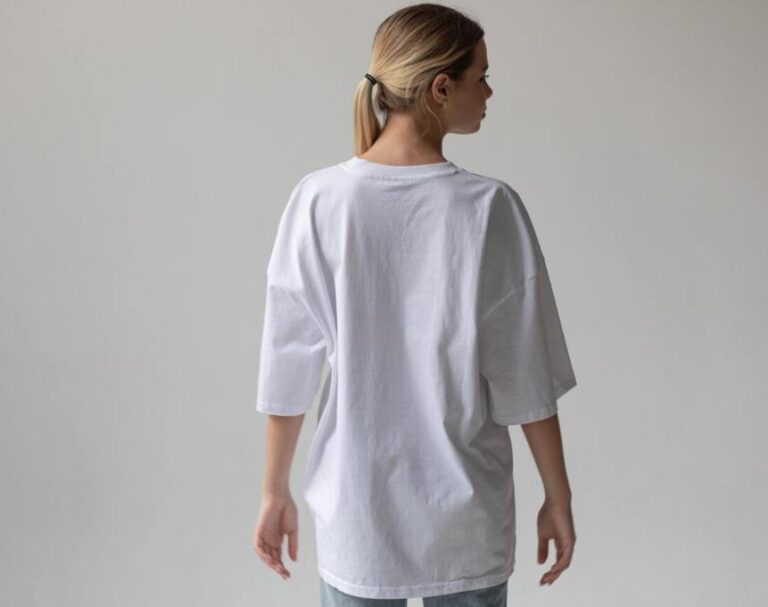If you own a business, you will have probably seen the business triangle. The theory behind this triangle is simple; a business can only prioritize two things between cost, quality and time. If something is cheap and high-quality, it has to take a lot of time, and so on. This rule applies for all businesses, and some end up choosing to prioritize a quickly-made product for cheaper prices. Today, we’ll be looking at why people choose cheap materials for brands–and why that’s generally a bad idea.
Generally speaking, ‘cheap materials’ can have a broad variety of traits depending on your definition. Something cheap doesn’t necessarily have to be low-quality, but buying at a lower price range always comes with a few risks. We’ll be focusing on the concept of cheaper fabrics, typically made from synthetic fibers like polyester.
The Good

The obvious benefit of buying cheap materials for brand merch is the efficiency of cost. Let’s face it–brand owners have a lot of costs to deal with. Whether it’s costs for photography, social media management, distribution, and all sorts of other hidden factors, you’re paying either with your wallet or with your time. It’s a lot to take in.
It’s especially rough when your brand is making an insane number of goods but quickly running up the price of production. You want to appease your customers, but you also want to get your products ready on time. There’s also a constant search for more, especially when you’re expanding into international waters. Sometimes, the easiest way is to buy a ton of cheap fabric for several yards and live with the consequences.
But what are the consequences, exactly? Some brand owners believe their branding and presence can be enough to detract from the actual quality of a product. After all, if your name recognition is powerful enough, clients are more likely to forgive some trespasses, right?
Well, about that…
The Bad

The obvious massive issue to cheap materials is the low quality. But that can be disregarded a little bit, right? Surely the average consumer wouldn’t know the difference between wool and acrylic or anything of the sort. As long as it looks good to wear, it shouldn’t be an issue.
That’s the catch, isn’t it? Cheaper materials are cheap because they don’t look very good. Some of them can be too glossy, others too rigid, others more too easy to crease and wrinkle or lose color over time.
There are countless of videos on TikTok and other platforms exposing small, niche brands on Wish for advertising meticulous clothes and products and shipping something of a completely different quality. The truth is that to attain the level of quality clients expect, brands need to be very careful in the actual quality of fabric and material they ship out.
Some of this may be a no-brainer for you. Obviously low-quality garments and materials can easily lead to low-quality shirts, trousers, hoodies and all sorts of things. But how hard exactly would it be to work with these materials? Here are just some of the basic things cheap quality materials can negatively affect in your product, according to an expert tailor:
- Design & Color: Cheap fabric can easily lose color and texture over time. As such, any print designs labeled on the fabric will be lost eventually, leading to an embarrassing fit within anywhere between a year or even a couple of months.
- Shape & Creases: Cheap fabrics will not hold their original shapes over time. In fact, the slightest pressure may transform their pristine front into a crumpled mess. This is why many seasoned fashion vets will do a scrunch test to see whether a material is of high quality or not.
- Age & Resilience: Ultimately, low-quality fabric just doesn’t last as long as higher quality fabrics. Not only will the colors run, the fabric is more likely to rip, the texture is quicker to fade or dampen and everything about it becomes unwearable eventually. A client’s love for their brand is only as long as their product, and cheap material just won’t cut it after a few years. Less, even, if you’re really stretching it.
All of these things ultimately affect the consistency and quality of your product, but that can all be tended for with proper measures. You know what can’t be tended for? Reputation.
The Ugly

One of the major side effects of having bad quality product is breaking your client’s trust. There are many inexpensive producers that live only off the temporary profits of their low-quality products. If you’ve paid attention, most of these names are not spoken of with the same level of appreciation and fondness as others.
While it’s not impossible to build a brand out of affordability at the cost of substance, if you want your brand to truly thrive in the future, it’s tough to wash off the effects of a cheap reputation.
Starting off with an audience already used to low prices leads to a difficult transition to a better reputation, once you start raising prices or try offering higher-quality products. At best, it may lead to mediocre results that eventually climb into something better. At worst, it could lead to market alienation.
It’s even worse if you already had a reputation for quality or sentimentality. Turning to cheap materials for brand products taints both your brand’s image and whatever personas are tied to it. Ultimately, this leads to a deep sense of betrayal and a total backlash against the brand name.
So how do you balance all of this in the end? It’s easy enough to say “Simply use high-quality materials,” but brand owners are already overwhelmed with the numerous costs involved in building a business.
What’s there to do? We go back to the business triangle in the beginning; if you want high quality material for affordable prices, the solution is to take time carefully researching your options. In Singapore alone, there are multiple fabric manufacturers that will give samples and provide references for their costs, negotiations and services. As long as you take the time to study, you’ll get better long-term results.
Alternatively, you can also try out combined merchandise services that provide multiple options for brands. Shirtual has a wide selection of high-quality fabrics and apparel options at an affordable price in various bulks. Our thicker 200+ GSM shirts offers more durability in the long-run, leading to brand merch that last and feel great to wear.






